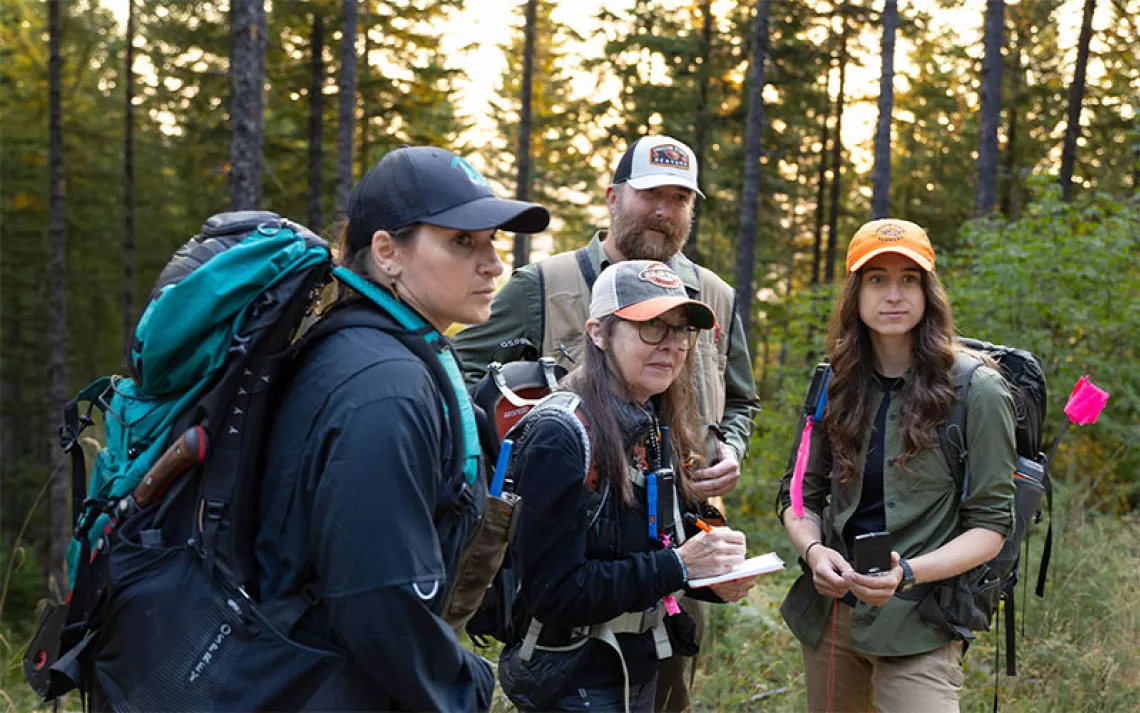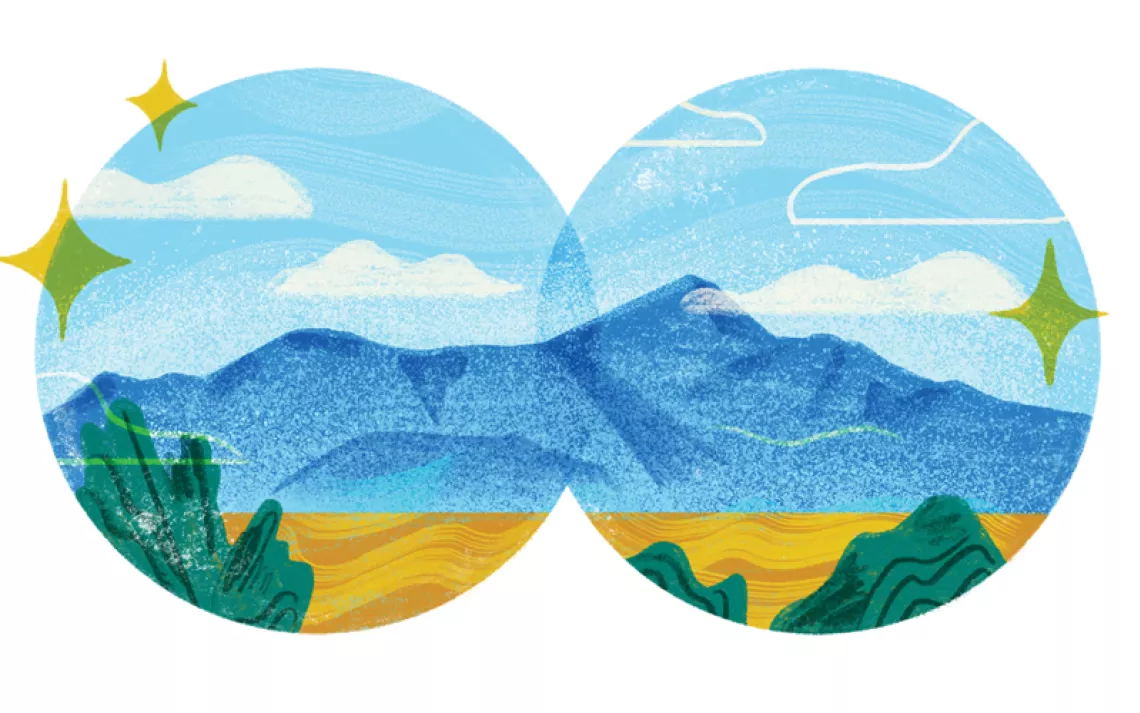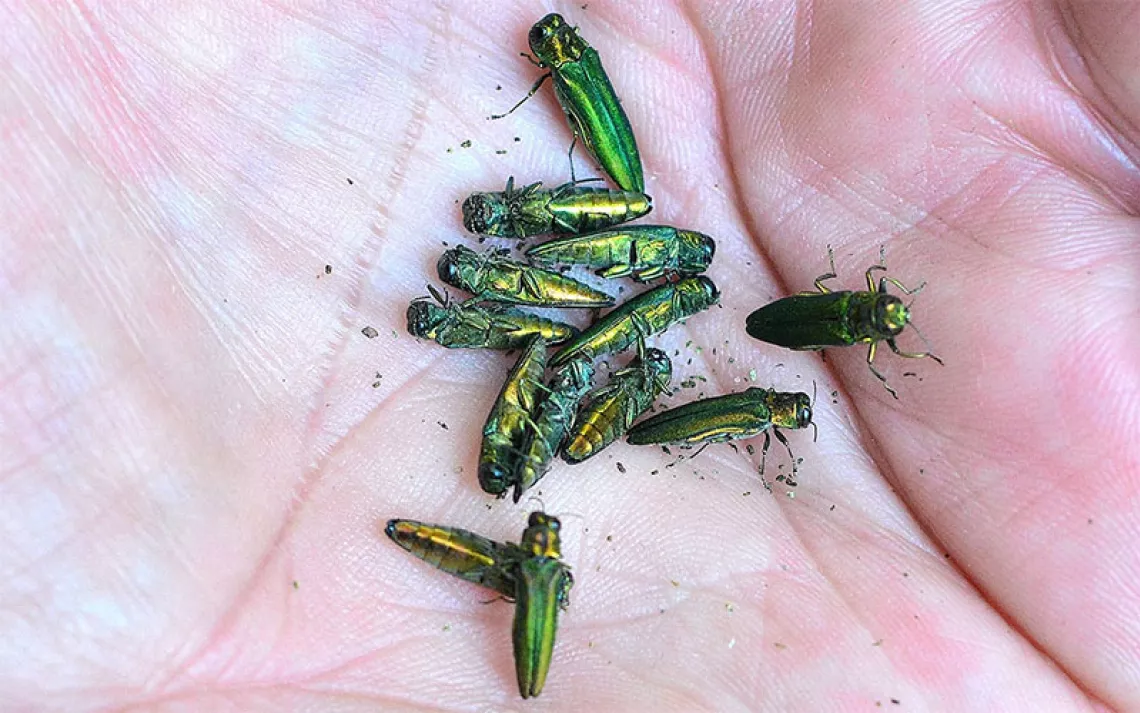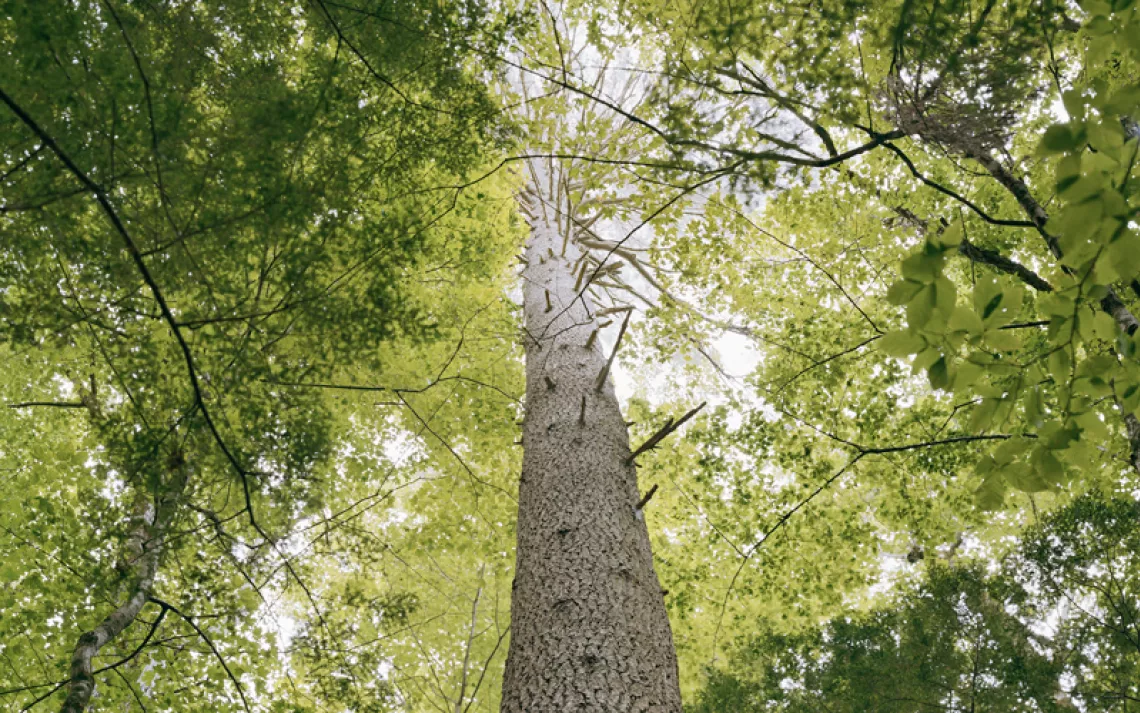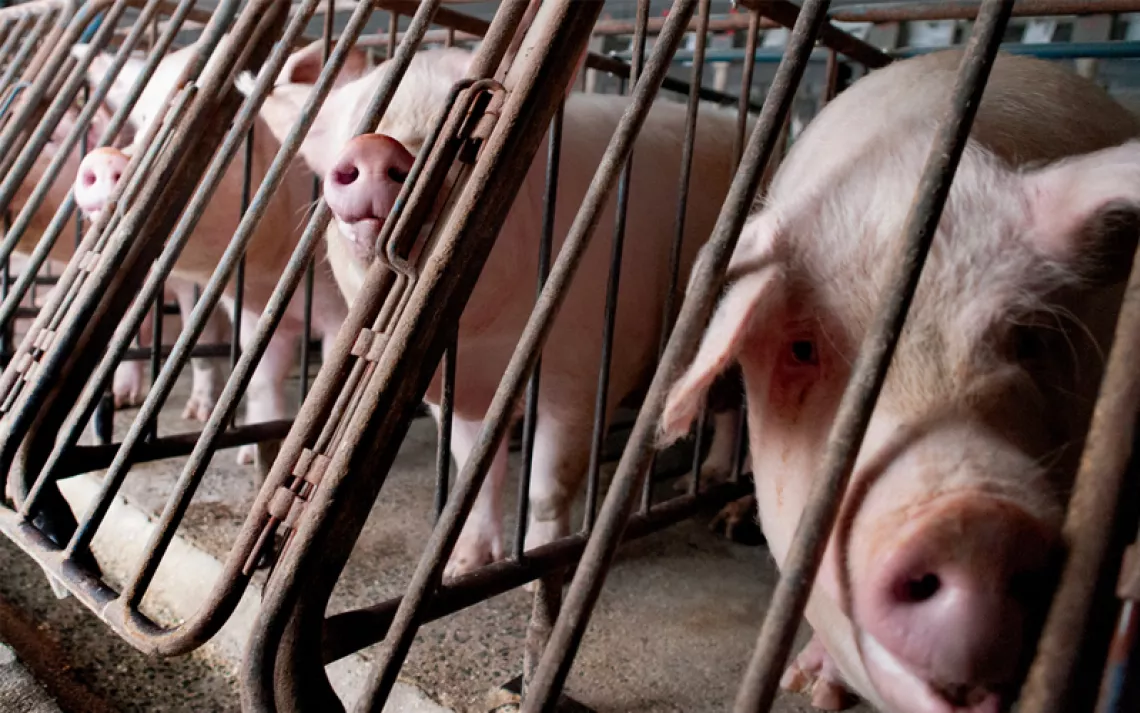Kayak-builder Kiliii Yüyan Teaches Students How to Handcraft Modern Kayaks Using Traditional Techniques
Yüyan has evolved indigenous technology to serve modern needs
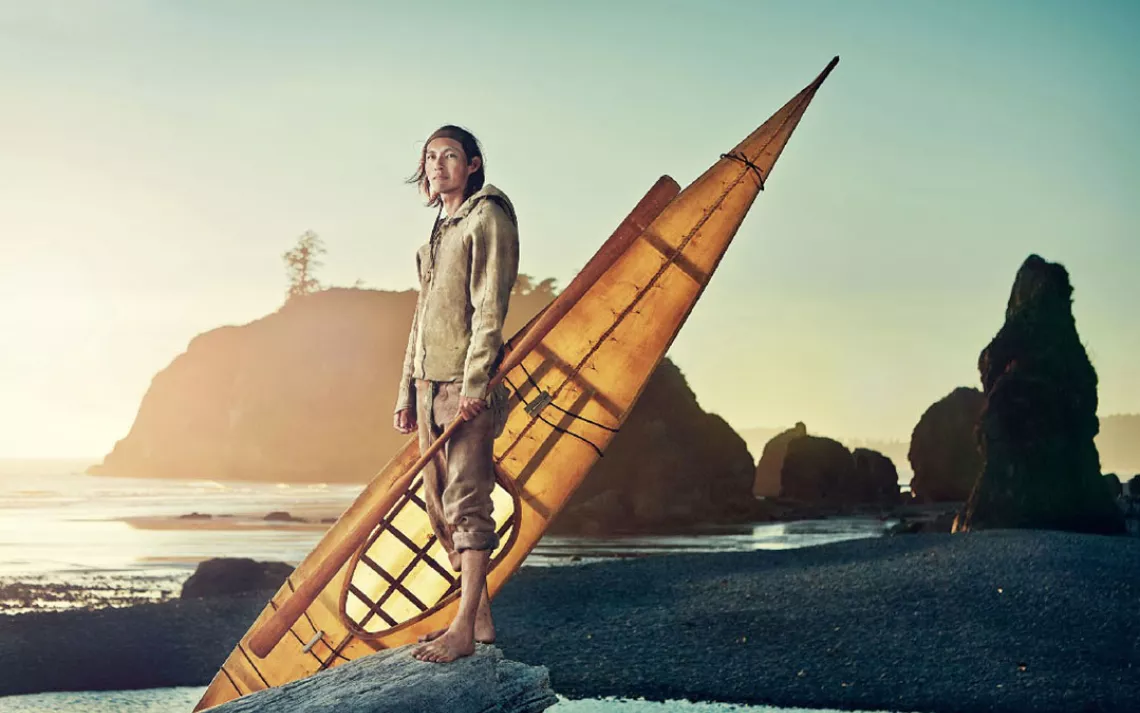
Kiliii Yüyan | Photo by Oliver Ludlow
Kiliii Yüyan didn't learn about his indigenous roots until his maternal grandmother was on her deathbed. Yüyan was in his twenties when she was hospitalized, and before then he had spent his entire life believing he was fully ethnic Chinese. His grandmother was fading in and out of delirium and began speaking a language that he didn’t recognize and repeating “Nanai” (pronounced nah-NIGH or NAH-nee)—the name of her people in Siberia. “At the time I was just like, ‘Oh my god, Grandma, you’ve gone totally delirious. I don’t even know what you’re saying,’” he recalls.
After his grandmother passed, Yüyan met another Nanai woman—from the only other Nanai family in the United States, to Yüyan’s knowledge—who shed light on his grandmother’s past. She became Yüyan’s surrogate grandmother, teaching him the history and culture of his indigenous self.
Now Yüyan has built a career as a documentary photographer and traditional kayak-builder, which places him among a generation of revivalists whose work has reintroduced indigenous culture and technology into the modern world. During the last 15 years, he has traveled the world documenting the stories of modern indigenous people and teaching Westerners how to build skin-on-frame kayaks, a technology he first learned from a Western revivalist kayak-builder himself. For Yüyan, these years have been spent searching for the answer to a complicated question: Can a modern person learn to see the world through Native eyes?
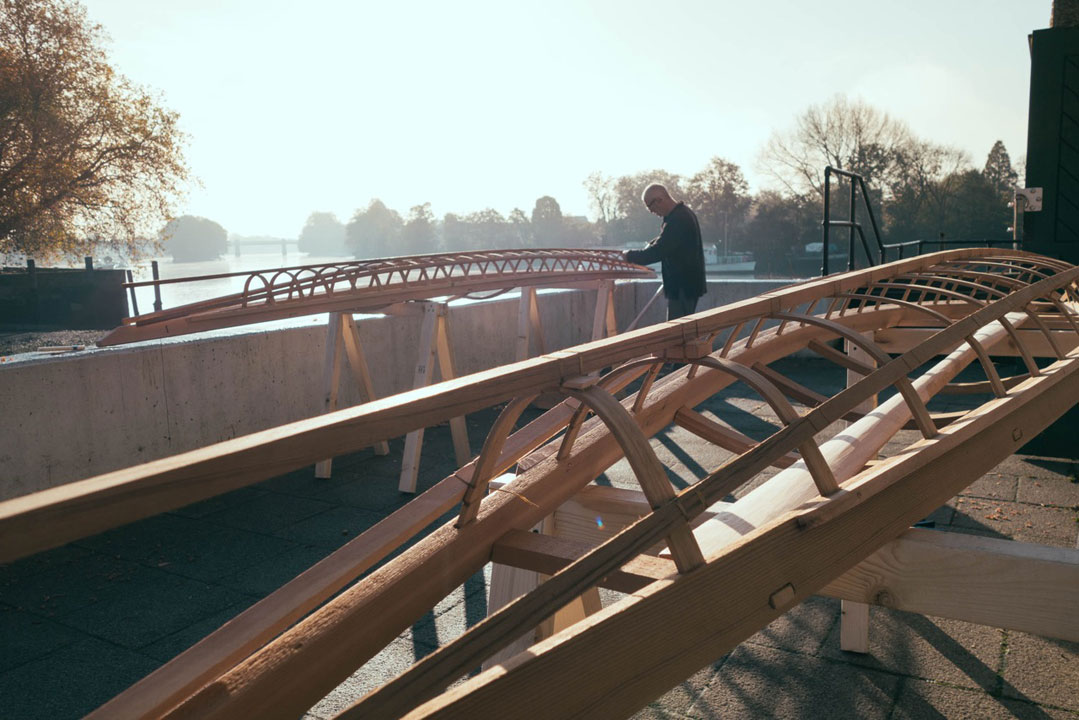
The wood frame of a kayak | Photo by Kiliii Yüyan
In the studious intimacy of borrowed wood shops, Yüyan welcomes people of all ages and experiences to join his kayak-building workshops. It’s not uncommon for students to arrive without having ever made something with their hands. It’s less common for a 10-year-old girl to appear (as happened at one recent workshop), but he welcomed her just the same. By the end of a nine-day span, each apprentice has handcrafted their own kayak sans power tools under Yüyan’s patient and energetic guidance.
“It’s a very interesting dynamic, a very supportive atmosphere,” says student Paul Richards. “Kiliii makes it super fun. He’s one of those people who’s a born teacher. He really has an ability to explain something so a 10-year-old can understand it just as well as a 50-year-old.”
Richards, father of said 10-year-old and another, 12-year old, girl, first learned about Yüyan’s workshops in 2013 while searching the internet for ultralight kayak plans. A carpenter of 25 years, he invited Yüyan to his own woodworking studio and within a month hosted Richards’s first workshop with four other classmates. Every year since, Richards has asked Yüyan to return. His wife and two daughters have now each learned the craft.
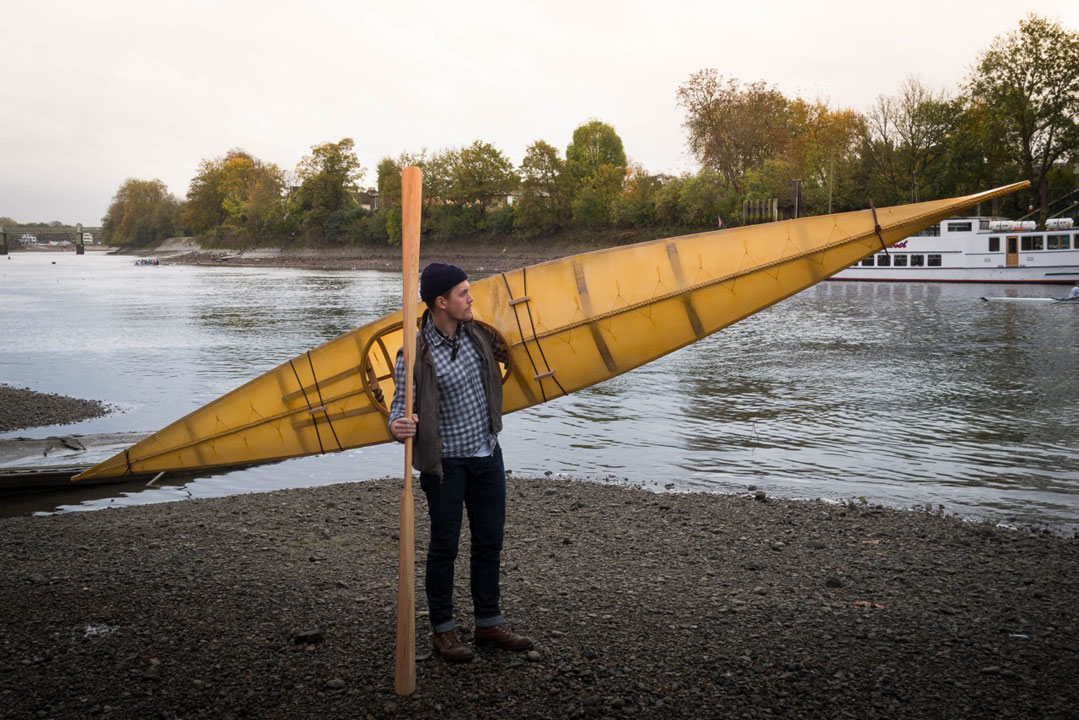
A student readies his finished kayak for the water. | Photo by Kiliii Yüyan
For kayak-using indigenous cultures, the kayak—or qayaq, in the language of Arctic Eskimo tribes—is a cornerstone of life. It is the hunting partner of its builder and owner. The counterpart to the self. For the Yup’ik peoples, the kayak is even said to share a bed with its owner’s spouse.
“The kayak is a bit like the automobile and the grocery store to us, all lumped into one,” Yüyan says. “That’s how important it was for kayak-using people.”
Traditionally defined as skin-covered water vessels, kayaks originated from the indigenous tribes of the Arctic and subarctic regions who lived beyond the treeline. Unable to replicate the wooden closed-deck boats of their southern cousins, northern peoples adapted the boat design to better suit their resources, fashioning frames out of driftwood and covering them with seal skins. But except for in Greenland and a few other pockets, the earliest kayak-building practices are largely lost today. The craft disappeared with the passing of the tribes’ elders. Modern kayaks are a reincarnation of their predecessors, reconstructed by revivalist boat builders during a resurgence of Western interest in the boat’s form.
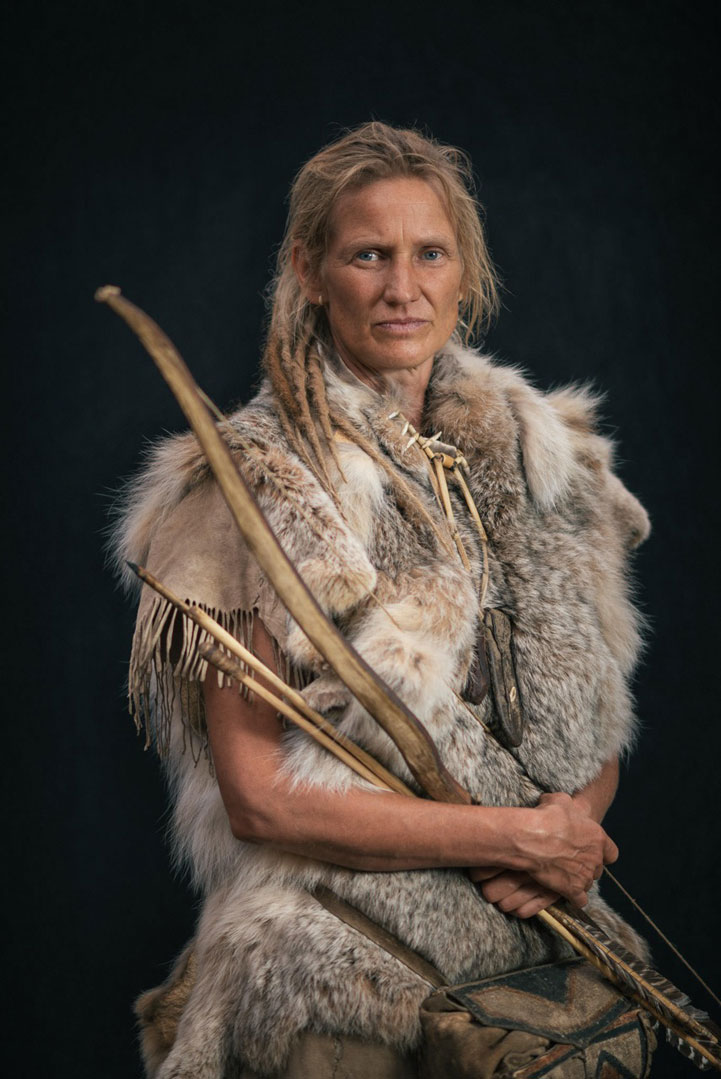
Lynx Vilden from Yüyan's Living Wild series | Photo by Kiliii Yüyan
Yüyan’s introduction to indigenous kayak-building began out of his desire to live life close to the earth. At 20, he began attending a primitive technology and skills gathering called Rabbitstick, the world’s largest annual meeting of its kind. There, he met Lynx Vilden and joined her treks into wilderness to live primitively, relying on only Stone Age tools for survival. Together with other like-minded adventurers, they took a long and arduous path to regain the knowledge of how to live well off the land, learning how to recognize edible plants, tan hides, and dry foods. During their initial, inexperienced years living in the wilderness, the group often went hungry for long periods of time, unable to catch enough game for sustenance. It was out of frustration at their unbearable hunger that Yüyan began his pursuit of building kayaks.
“If you’re trying to do survival stuff, the place to be able to eat well is the ocean—the ocean provides. So I needed to build a sea-going watercraft,” Yüyan explains.
Yüyan learned to build his first kayak from a second-generation revivalist builder whose pedagogical lineage traces back to John Heath, a historian who spent many years in the Far North studying from the original kayak builders. After practicing the craft on his own, Yüyan eventually spent his own time living with Yup’ik communities in Alaska, learning more traditional building methods, and more importantly, the spiritual and cultural significance of the kayak.
Yüyan now teaches several types of kayaks for modern paddlers. For recreational kayakers looking to maneuver through rough waters, the boats are sturdier and more buoyant to ensure paddler safety. For vacationers looking to relax on a lake, the boats have built-in storage for cargo. Though the kayaks’ designs are his own, he teaches them with reliance on indigenous techniques.
“Kayaks were originally built with a lot of improvising,” Richards recalls from Yüyan’s instruction. “That occurs when a student makes a mistake; Kiliii will improvise. How do you fix this? OK, let’s fix it this way. It’s interesting to see that in the class.”
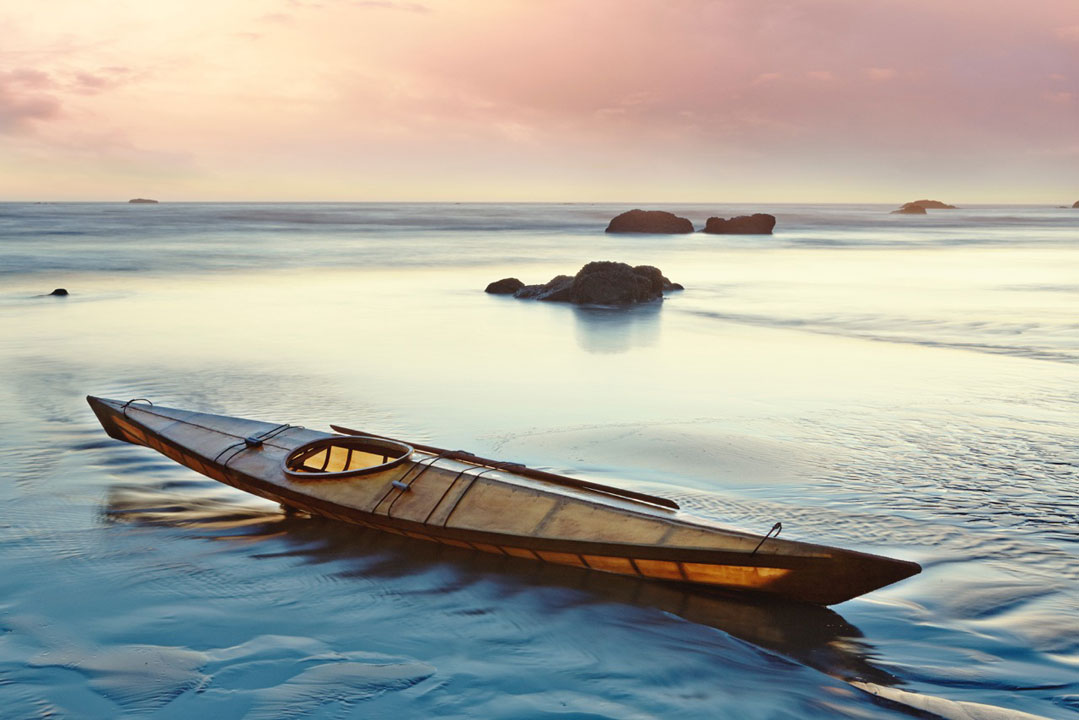
A kayak on the water | Photo by Oliver Ludlow
Although he did not know his indigenous identity during his grandmother’s life, Yüyan credits his work with indigenous cultures to her wonderful stories. “My grandmother’s stories seeded with me a really deep desire to be out living close to the land. Indigenous stories are about the adventure of being out there, the magic of meeting and speaking to animals, being a part of the forest in a way where all the creatures are alive and part of your community. It was magical. As a kid, being able to ride on the back of an orca or talk to a seal was so exciting to me, and I think that really carried over.”
One of his favorite tales was a story from her childhood about a time she caught a fish with her father that was larger than their canoe. Yüyan later discovered that the Amur River, which bordered his grandmother’s village, is home to the kaluga, the largest freshwater fish species in the world.
Yüyan’s ignorance of his ancestry does not surprise him. In his grandmother’s generation, indigenous peoples experienced deep discrimination in China, mirroring the discrimination faced by Native Americans. Those of indigenous descent often hid their roots for fear of losing opportunities.
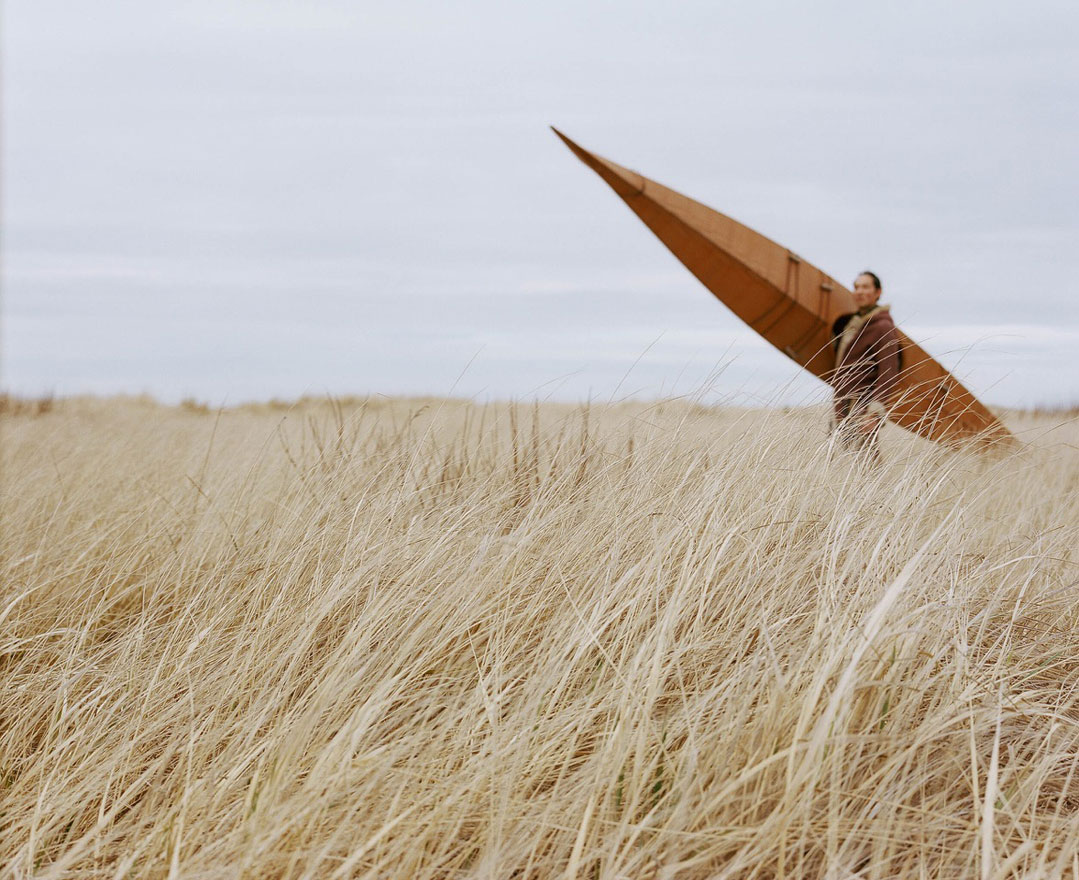
Kiliii Yüyan carries his kayak through the grass. | Photo by Elias Carlson
Although significant headway still needs to be made in protecting indigenous rights, recent years have seen a revival of indigenous cultures around the world. Indigenous agricultural practices are being revived in the United States with initiatives like the Minnesota-based White Earth Land Recovery Project. Native American cuisine is making a comeback with the work of Chef Sean Sherman and others. Indigenous canoe traditions have garnered increasing attention with the annual Pacific Northwest canoe journey celebration; in 2016, more than 120 tribal nations from as far as New Zealand gathered for the event.
For Yüyan, his efforts to preserve indigenous technology are about “taking something that was lost and important to people’s cultural identitie, and being able to carry it forward in time and have it evolve with the cultures where they are now.” He is now working on a book about how to reintroduce kayaks to northern indigenous cultures. It will teach the techniques he used to evolve traditional designs for modern kayakers, acting as a manual for indigenous builders to follow in adapting kayaks to their needs.
In his other profession as a documentary photographer, Yüyan documents native cultures and wilderness conservation. “I have an ability to be an ambassador for a lot of people who are voiceless,” he says, “and I think that feels very important to me.” He was formerly also a wilderness guide and continues to speak on wilderness issues alongside indigenous ones. By spanning both conservation and indigenous worlds, he has played a unique role in fostering understanding between both sides, which have historically tense relations because of mutual miscommunication.
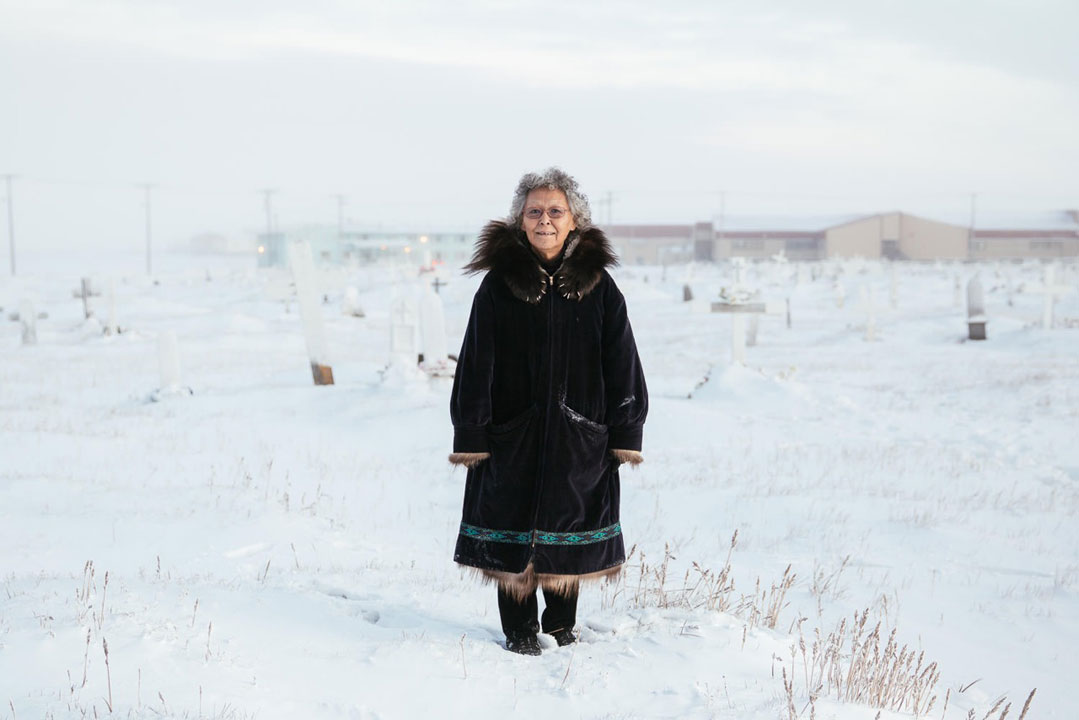
Iñupiat elder Fannie Akpik | Photo by Kiliii Yüyan
Most recently, Yüyan wrapped up a documentary project for National Geographic on the Iñupiat people. He is now looking forward to a new project about traditional ecological knowledge, which has largely been overlooked by science but would add significant value to existing scientific understanding, particularly in the context of environmental issues and climate change. “For example, the Iñupiat are an Eskimo people. They’ve been hunting whales for a really long time, so they know a lot about ice and global warming,” Yüyan says.
Richards says Yüyan’s class broadened his perspective about traditional technologies and indigenous cultures’ connections to nature. “The last time we launched in June, Kiliii did, for the first time, a little ceremony of everyone lined up in their boats. We all closed our eyes and he started speaking—it was almost like a blessing for the boats and for us—he was speaking about feeling the elements and the wind and the water and the earth below us, how what we had created is something that ties us to all of that and to history. It was pretty moving. Even my 10-year-old was taken by it.”
Richards says his kayak has given him a new outlook on the world: “It’s really led me into trying to understand the ocean, and that is tying me more to the idea that the planet is mostly water. When you start to try to understand what the ocean is, all the things that come with it and the connections to our whole ecosystem become more apparent.”
Though Yüyan admits that it is difficult for a modern person to shed their own culture, he has, over time, found an answer of sorts to his question about what modern cultures can learn from traditional ones: “To a large extent, you can see the land itself through native eyes. You can see relationships with other people in the way that indigenous cultures do. And I think that would make the world a better place.”
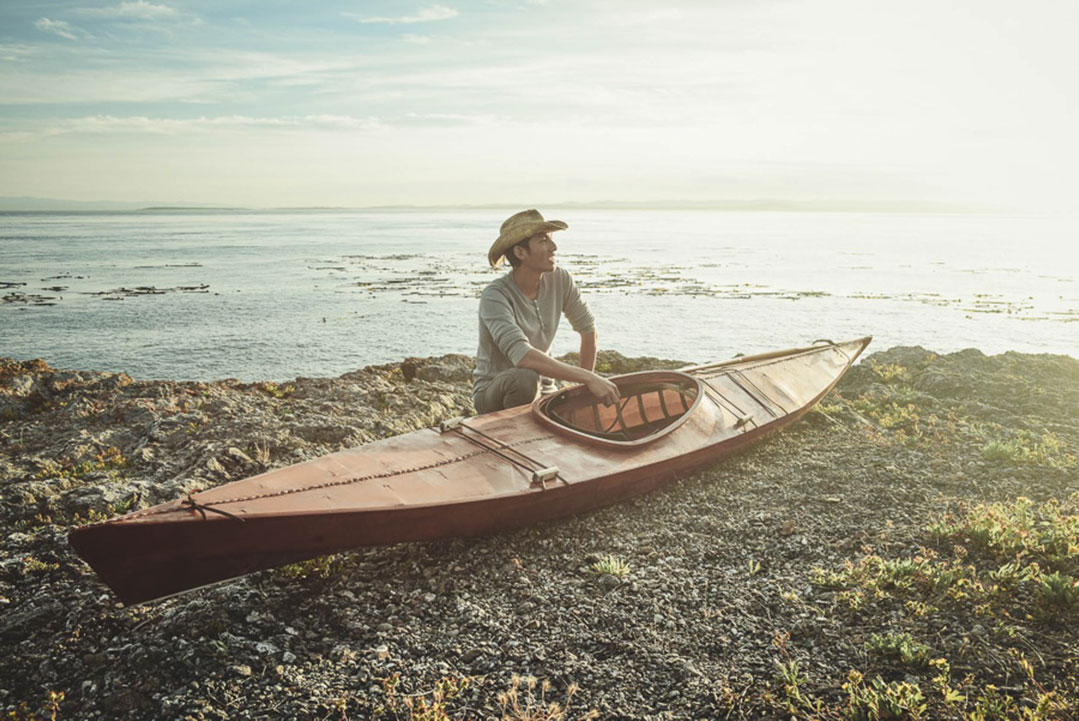
Photo by Owen Perry
 The Magazine of The Sierra Club
The Magazine of The Sierra Club
